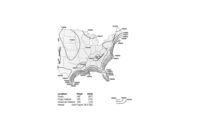Challengers Losing Battle To Derail Updated Structural Standard
ASCE 7-16 on Strong Course To Become Part of 2018 International Building Code
Members of the International Code Council have voted online to "approve as submitted" the updated structural building-design standard, written by the American Society of Civil Engineers' Structural Engineering Institute, for inclusion as a reference standard in the 2018 edition of ICC's International Building Code. However, the online ballot results are preliminary, pending certification by ICC's validation committee and confirmation by ICC's board of directors.
The date of the ICC board meeting has not been set. "I anticipate it to occur in mid- to late January," says Mike Pfeiffer, ICC's senior vice president, technical services.
The National Association of Home Builders and other groups had opposed the adoption of SEI ASCE 7-16: "Minimum Design Loads and Associated Criteria for Buildings and Other Structures" because of new provisions related to seismic loads; tsunami-resistant design for critical buildings for the West Coast, Alaska and Hawaii; and, especially, increases in low- and flat-roof wind-pressure coefficients—mostly along a 600-ft strip for about 1,000 miles on the southeastern seaboard and the Gulf Coast.
Tsunami-resistant design, included in chapter six of the standard, is a new subject for ASCE-7. In March, design requirements for tsunami loads and effects gained approval for inclusion in ASCE 7-16, expected to be published next year. Though formal implementation of the requirements is still pending, "they have already been used voluntarily in projects in the U.S. as well as internationally," says Gary Chock, president of Martin & Chock Inc. and chair of ASCE's tsunami loads and effects subcommittee.
To support chapter six, ASCE expects to publish, likely late next year, a tsunami design guide, "Tsunami Loads and Effects: Guide to the Tsunami Design Provisions of ASCE 7-16." The guide will explain the tsunami requirements and provide analysis and design examples, says Ian Robertson, a professor of structural engineering at the University of Hawaii and the guide's lead author.






